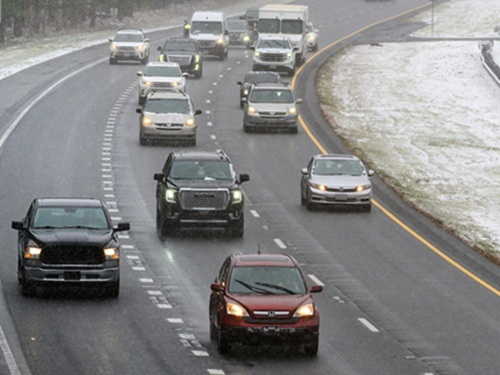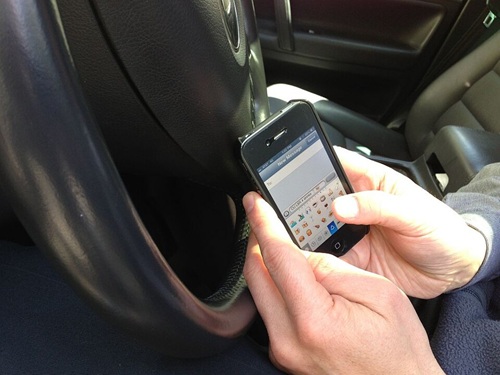New research by the AAA Foundation for Traffic Safety indicates that smartphone technology could help motorists become safer on the road by enabling more accurate measurement of dangerous driving behaviors.
[Above photo by Intel Free Press vis Wikipedia]
AAA examined whether providing feedback and incentives via usage-based insurance or UBI programs enhances driver safety, with the “feedback” for such programs typically gathered via smartphone applications. AAA said its researchers also explored whether targeted goals, either assigned or self-selected, lead to greater improvements in driver behavior and thus overall road safety.

“This research, with over 1,400 study participants, gauges what motivates individuals to change certain risky driving behaviors,” said Dr. David Yang, president and executive director of the AAA Foundation for Traffic Safety, in a statement. “Finding ways to reduce these behaviors can positively impact traffic safety and reduce injuries and fatalities on our roads.”
That study examined the use of handheld phones, speeding, hard braking, and rapid acceleration. Participants were divided into four groups, with different levels of feedback and advice over a 12-week period. All groups, except the observation group, could earn bonus incentives based on their overall driving safety.
- The Observation group – served as the control; their driving was monitored during this period, but they received no feedback or bonus incentive.
- The Standard Feedback group – given weekly feedback and advice via text messages on all behaviors monitored.
- The Assigned Goal group – focused on one specific behavior assigned to them and were given weekly feedback and advice via text messages on that one behavior.
- The Chosen Goal group – participants selected one behavior to focus on and set a goal for improvement; were given weekly feedback and advice via text messages on that goal.
Among the three feedback groups, there were clear improvements in driver behavior, AAA said:
- Up to a 13 percent reduction in speeding.
- Up to a 21 percent reduction in hard braking.
- Up to a 25 percent reduction in rapid acceleration.
Surprisingly, the use of handheld phones remained unchanged, AAA said – possibly because the baseline safety scores provided to participants at the start of the study led drivers to believe that they were being safer than they actually were – therefore, convincing them that there was less need for improvement.
Participants also reported how helpful the following tactics were in changing their behaviors:
- The potential to earn extra money: 67.4 percent.
- Weekly driving feedback via text message: 53.9 percent.
- Weekly dashboard, which provided detailed driving information for the week: 45.8 percent.
Participants in the “Assigned Goal” and “Chosen Goal” groups also displayed higher engagement with the dashboard, which correlated to greater improvement in risky driving behaviors, AAA said.
After the 12-week period, AAA noted that participants were monitored for an additional 6 weeks without any feedback or incentives to determine if their habits would persist in the absence of reinforcement. The study found that, generally, participants continued to drive more safely, indicating that they did so without receiving feedback or incentives.
“It’s encouraging to see that many individuals stuck with safer habits even after the study,” said Jake Nelson, AAA’s director of traffic safety advocacy. “This shows that positive reinforcement, not just punitive measures, can lead to safer driving habits that can save lives.”
 Nation
Nation
Registration Open for AASHTO’s Winter Rail Meeting
December 19, 2025 Nation
Nation

